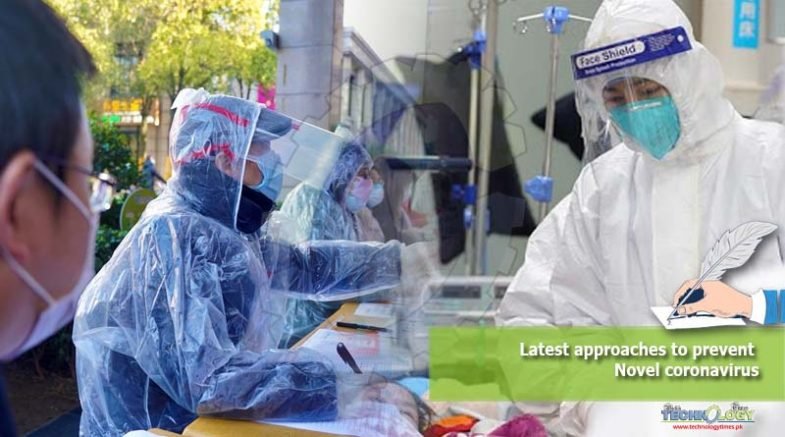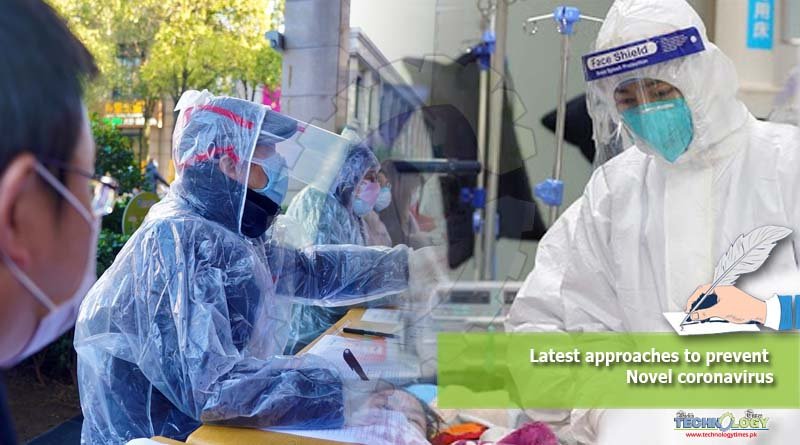The 2019 novel coronavirus is now named severe acute respiratory syndrome coronavirus-2 (SARS-CoV-2) while the disease associated with it is called as COVID-19.
 SARS-CoV-2, was identified in China at the end of 2019 and is a modified new strain of coronavirus that has not been previously identified in human beings.
SARS-CoV-2, was identified in China at the end of 2019 and is a modified new strain of coronavirus that has not been previously identified in human beings.
How humans contract corona viruses?
Corona viruses are viruses that circulate among animals but some of them are also known to affect humans. After they have infected animals, they can eventually be transmitted to humans.
A wide range of animals is known to be the source of coronaviruses. For instance, the Middle East respiratory syndrome coronavirus (MERS-CoV) originated from camels and the Severe Acute Respiratory Syndrome (SARS) originated from civet cats.
Comparison of coronavirus with SARS and seasonal flu
The novel coronavirus detected in China is genetically closely related to the 2003 SARS virus and appears to have similar characteristics, although there is still limited data available on this virus.
SARS emerged at the end of 2002 in China and more than 8 000 SARS-cases were reported by 33 countries over a period of eight months. At the time, one in ten people who contracted SARS died.
The current COVID-19 outbreak caused around 10 000 reported cases in China during the first month of the outbreak, with additional cases subsequently being detected in Europe and other countries. At this point, there is too little data available to say for sure how deadly COVID-19 is but preliminary findings indicate that it is less fatal than SARS coronavirus.
While both SARS-CoV-2 and influenza viruses are transmitted from person-to-person and may cause similar symptoms, the two viruses are very different and consequently do not behave in the same way. It is still very early to draw conclusions on how SARS-CoV-2 spreads, but preliminary information indicates that SARS-CoV-2 is as transmissible in the same way as SARS and some other pandemic influenza strains have been. ECDC estimates that each year up to 40 000 people in the EU, the UK, Norway, Iceland and Liechtenstein die prematurely due to causes associated with influenza.
Modes of dissemination of Coronavirus?
While animals are the source of the virus, this virus is now spreading from one person to another (human-to-human transmission). There is currently not enough epidemiological information to determine how easily and sustainably this virus spreads between people. The virus seems to be transmitted mainly via respiratory droplets that people sneeze, cough, or exhale.
The incubation period for COVID-19 (i.e. the time between exposure to the virus and onset of symptoms) is currently estimated at between two and 14 days. At this stage, we know that the virus can be transmitted when those infected show (flu-like) symptoms. However, there are still uncertainties as to whether mild or asymptomatic cases can transmit the virus.
If people with COVID-19 are tested and diagnosed in a timely manner and rigorous infection control measures are applied, the likelihood of sustained human-to-human transmission in community settings in the EU is low. Systematic implementation of infection prevention and control measures were effective in controlling SARS and MERS coronaviruses.
Precautions and treatment for novel coronavirus
There is currently no vaccine to prevent coronavirus disease 2019 (COVID-19). The best way to prevent illness is to avoid being exposed to this virus. However, as a reminder, CDC always recommends everyday preventive actions to help prevent the spread of respiratory diseases, including:
- Avoid close contact with people who are sick.
- Avoid touching your eyes, nose, and mouth.
- Stay home when you are sick.
- Cover your cough or sneeze with a tissue, then throw the tissue in the trash.
- Clean and disinfect frequently touched objects and surfaces using a regular household cleaning spray or wipe.
- Follow CDC’s recommendations for using a facemask.
- CDC does not recommend that people who are well wear a facemask to protect themselves from respiratory diseases, including COVID-19.
- Facemasks should be used by people who show symptoms of COVID-19 to help prevent the spread of the disease to others. The use of facemasks is also crucial for health care workers (at home or in a health care facility).
- Wash your hands often with soap and water for at least 20 seconds, especially after going to the bathroom; before eating; and after blowing your nose, coughing, or sneezing.
- If soap and water are not readily available, use an alcohol-based hand sanitizer with at least 60% alcohol. Always wash hands with soap and water if hands are visibly dirty.
There is no specific treatment for this disease so the approach used to treat patients with coronavirus related infections is to treat the clinical symptoms (e.g. fever, difficulty breathing). Supportive care (e.g. supportive therapy and monitoring – oxygen therapy, fluid management and antivirals) can be highly effective for those infected.
